(Editor’s note: As Alfa Romeo celebrates its 110th anniversary during 2020, it is exploring its archives for highlights of its history. Today’s installment written by Alfa Romeo tells the story of its acclaimed post-war sports cars.)
“It is a very forgiving car. Very pretty, too.” That’s what the legendary Steve McQueen said about Duetto in the summer of 1966, having been invited by Sports Illustrated to try the Italian spider, along with other “fast friends.”
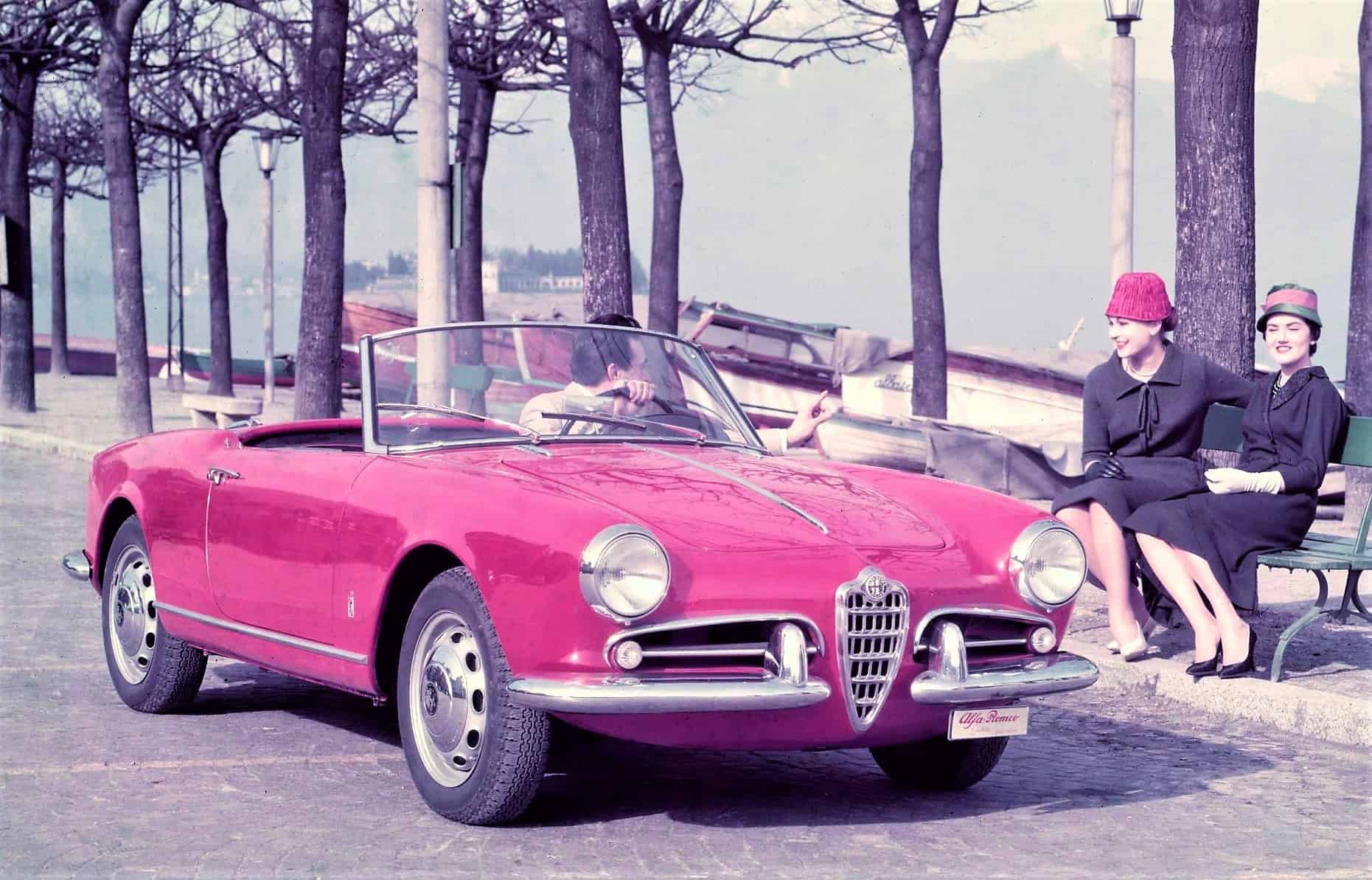
The model he drove was one of the first Alfa Romeo 1600 Spiders to arrive in the US, after its debut at the Geneva Motor Show a few months earlier. In a few words, McQueen’s judgment sums up the essence of Duetto and the uniqueness of Alfa Romeo: driving pleasure and pure beauty.
Technically, his was an authoritative opinion. Steve McQueen was a supercar collector and a skillful driver, who finished second in his category at the 1970 Sebring 12 Hour event, paired with Peter Revson.
A year later, a young Dustin Hoffman was driving a Duetto at full speed to the music of Simon & Garfunkel in The Graduate. Iconic images that became sculpted in film history, launching a whole series of quotations where the Duetto was seen in hundreds of films and TV stories, becoming a cult in its own right.
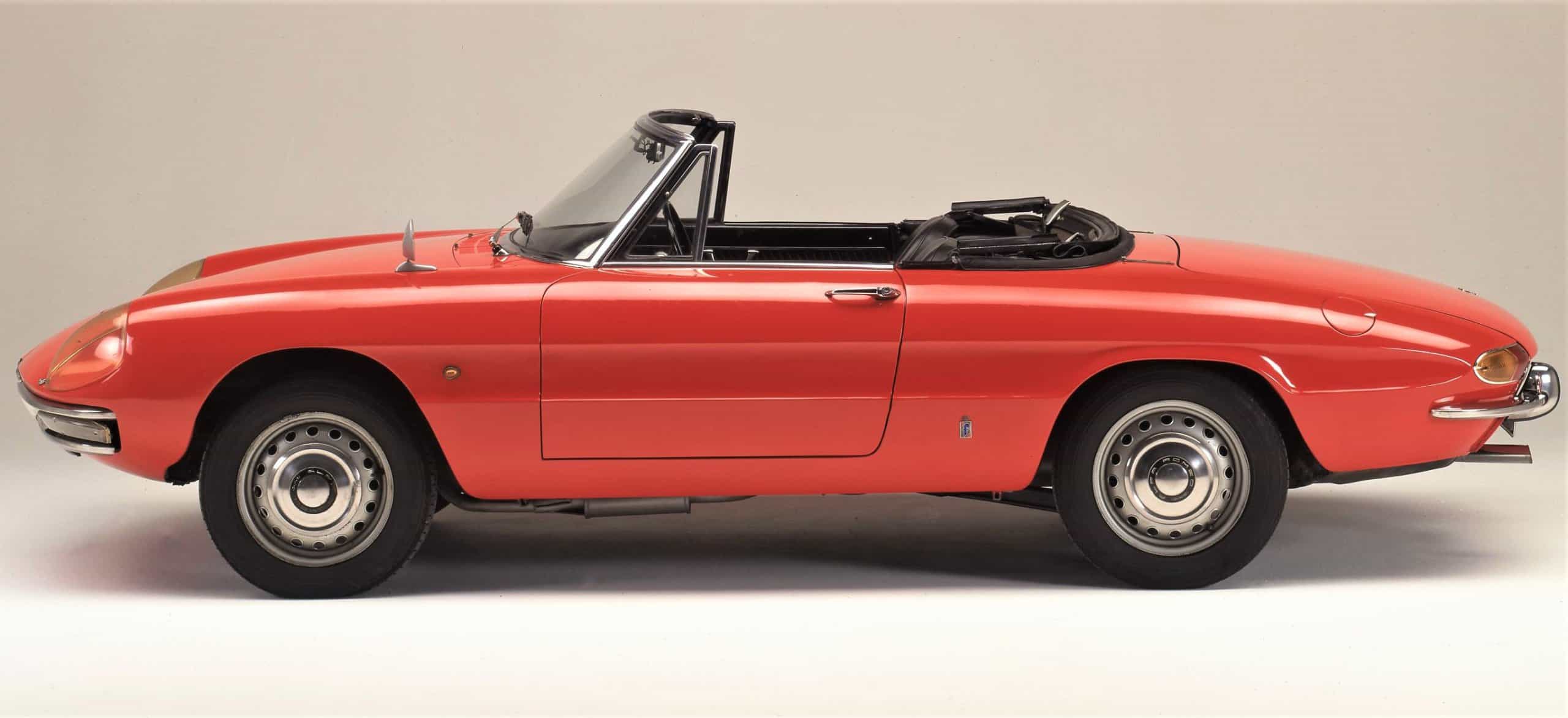
When he was World Heavyweight Champion, Muhammad Ali had a Duetto that referenced his famous motto, “Float like a butterfly, sting like a bee.” He had the number plate customized to read ALI BEE.
Max Edwin Hoffman, an ex-racing driver who was forced by Nazism to abandon Austria for the United States, became the American importer for European car manufacturers. Max was much more than a simple trader, he gave advice on commercial policies, asking for specific models, suggesting style variations and contributing to the creation of some of the most passionately admired sports cars ever made – one of which was the Giulietta Spider.
A lady that became an obsession for Hoffmann, he began asking Alfa Romeo for her in 1954, immediately after the launch of the Giulietta Sprint. He felt it would become the perfect car for the Pacific Coast, convinced that everyone in Hollywood would want one. So confident was he of its success that he said he was willing to buy several hundred, even before he had seen the final designs.
Hoffman managed to convince Francesco Quaroni and Rudolf Hruska, and the project was launched. A style competition was set up between the two designers of the moment: Bertone and Pinin Farina.
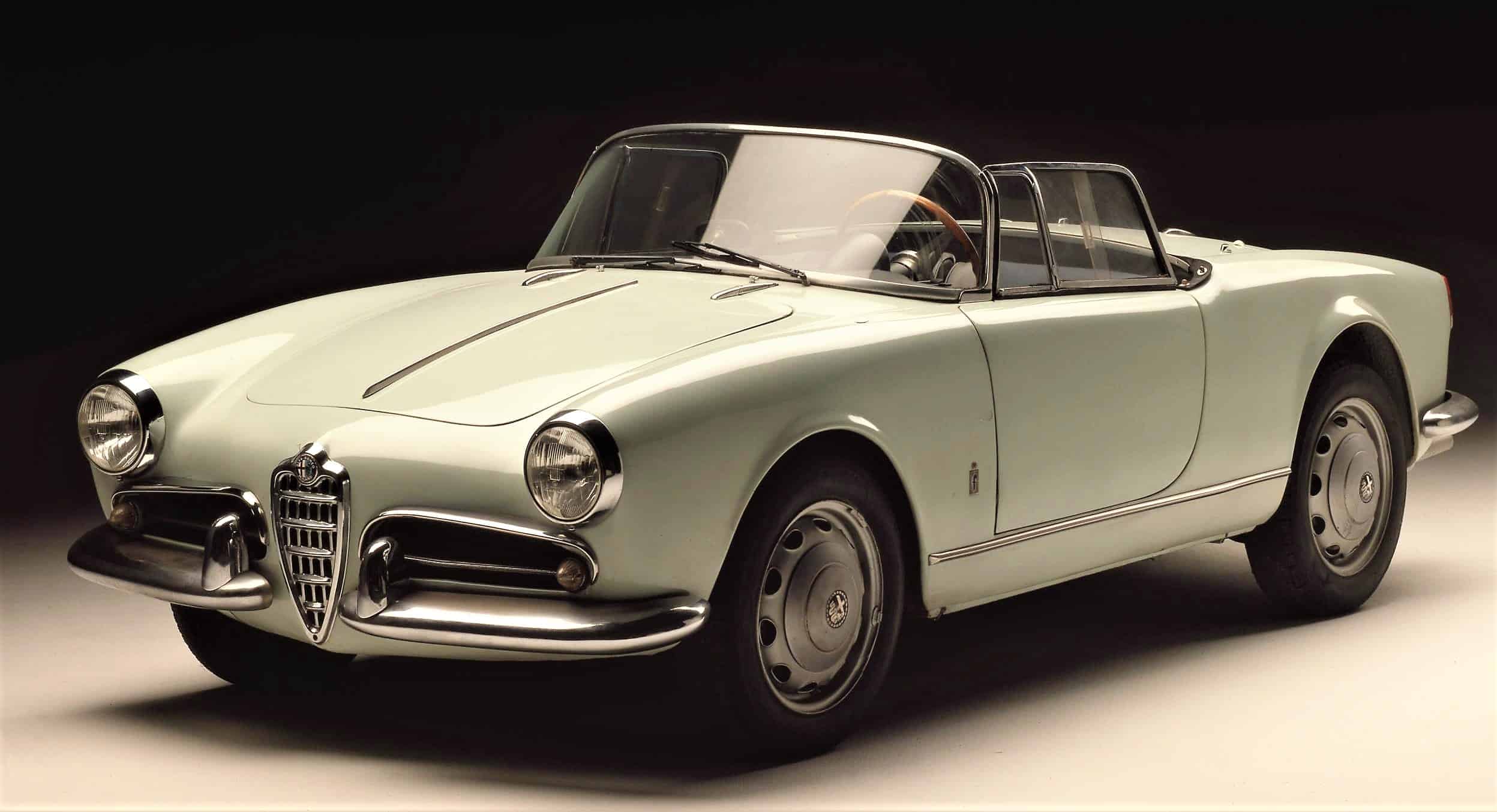
Bertone came up with an extreme vision, the daughter of Franco Scaglione’s “2000 Sportiva” concept with a pointed front, streamlined headlights and rear fins.
Pinin Farina’s proposal was designed by Franco Martinengo and was chosen on account of the elegance and classic balance of its shapes.
“The beautiful young lady,” as Battista “Pinin” Farina described it, began with a panoramic windscreen and sliding side windows. It also had no handle inside the door; a rope pull activated the door opening. Only later would a traditional windscreen appear, plus descending side windows, equipped door panels, folding roof, external handles and new interiors.
The pure sports concept was confirmed by its brilliant performance. The Spider adopted the Giulietta engine, a 1,290cc 4-cylinder engine, which delivered 65 horsepower and thrust the car up to 96 mph. Power continued rising in subsequent versions, starting with the 1958 80-horsepower Spider Veloce.
Flexible, young, quick and beautiful, the Giulietta Spider was adored by the cinema. Fellini gave her a role in La Dolce Vita, Antonioni chose her as Alain Delon’s car in The Eclipse, and she became a status symbol loved by famous people and desired by everyone.
The time came when an heir had to be conceived for the Giulietta Spider. Luraghi and his team were aware that making an excellent car would not be enough, that the same aura of charisma was needed. Its presentation must be a major event somewhere between an investiture and a coronation.

Alfa Romeo wanted something massive. So, for the US launch, it organized a transatlantic luxury cruise liner, inviting the most exclusive celebrities from show business, sport and fashion to come on board. There were 1,300 VIPs on board, including actor Vittorio Gassman, actress Rossella Falk and the soprano Anna Moffo. The Italian ship sailed from Genoa to New York, with a stopover in Cannes for the Film Festival.
During the entire cruise, three examples of the new Spider were displayed on the ship’s bridge, one green, one white and one red. By repeatedly highlighting the Italian nature of its product, Alfa Romeo anticipated the “Made in Italy” communication drive by over a decade.
The Alfa Romeo Spider 1600 was born on a Giulia base, with the wheelbase reduced to 2,250mm and the mechanics from the contemporary Giulia Sprint GT Veloce (an evolution of the Sprint GT). At its launch, Duetto was equipped with the classic 1,570cc twin-cam 4-cylinder engine in light alloy, capable of generating 108 horsepower and with a dry weight of less than 1,000 kilos (2,200 pound). Its maximum speed was 115 mph.

Finding a name for the model was a story in itself. A competition was organized in collaboration with all its European dealers. “Duetto” won, but a problem with rights emerged due to a chocolate biscuit with the same name. This required the car to be launched as the Alfa Romeo Spider 1600.
The name Duetto remained in the background, however, consolidated in the memory of fans and becoming the nickname of all the car’s generations. The 1966 Spider, the first of the series and the last masterpiece by Battista Pinin Farina, was called “Cuttlefish Bone” due to its ellipsoidal shape, with rounded front and rear, convex sides and very low beltline. The second was the 1969 “Coda Tronca,” or “Short Rear,” eye-catching for the aerodynamic cutoff of its back end.
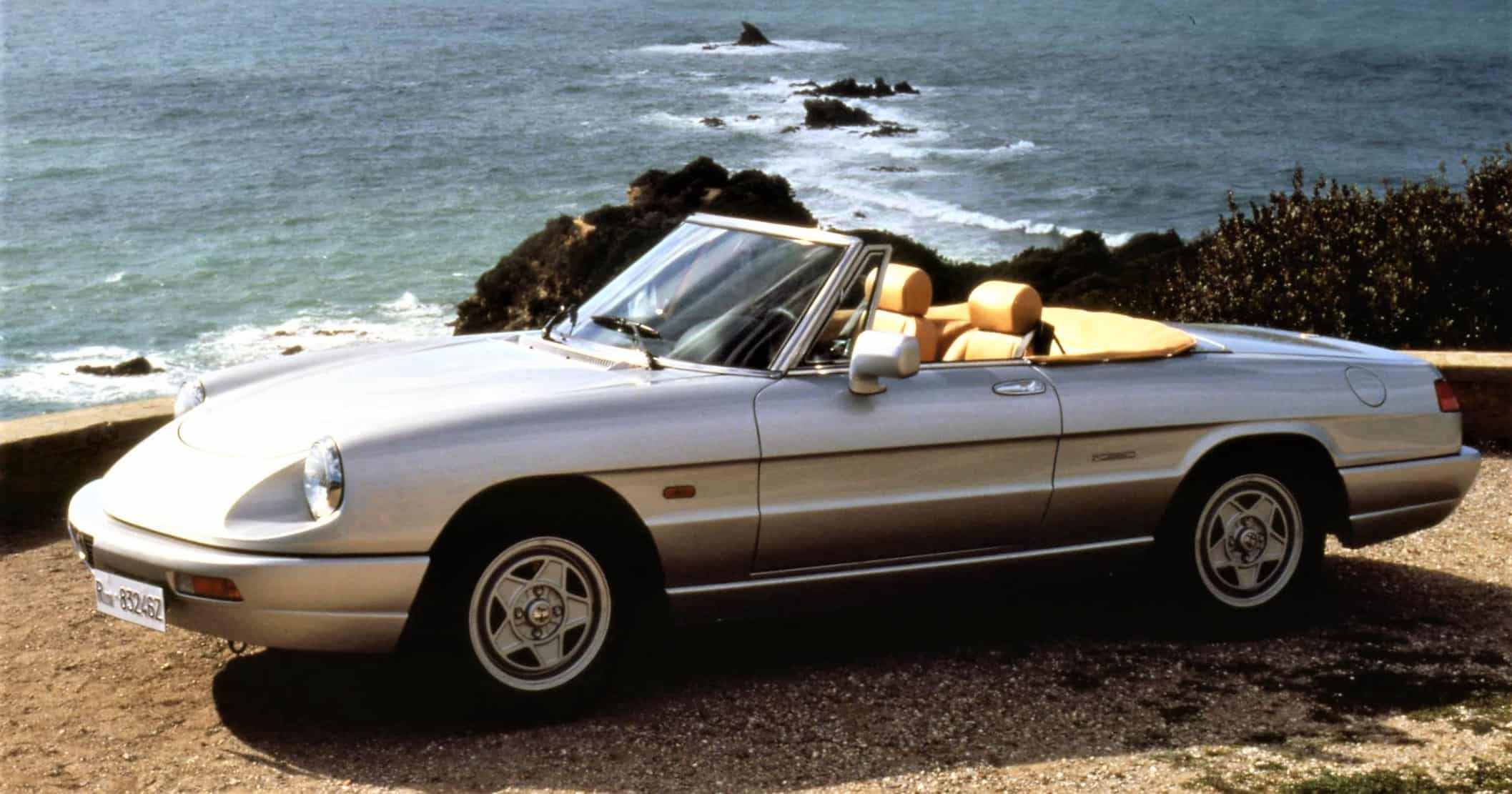
The third is the “Aerodinamica” of 1983, named after its lengthy trials in a wind tunnel. In 1989, the last generation arrived, the so-called IV Series, a car with a clean and streamlined body, almost a return to its origins.
Four generations, more than 124,000 examples produced in 28 years, the Duetto had the longest life for any Alfa Romeo model.



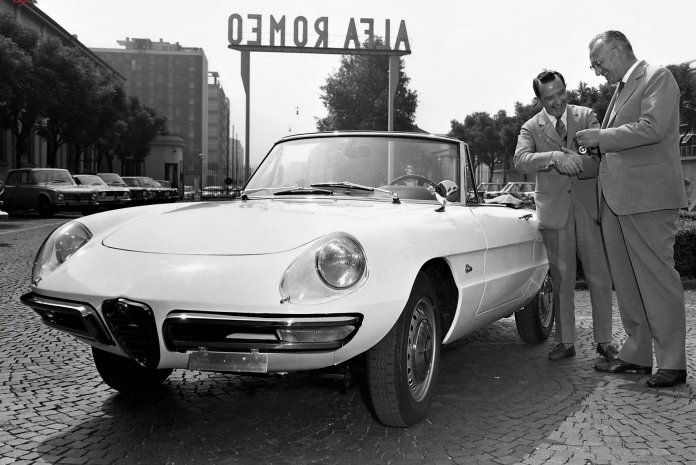


Alfa romeo 105 91 prototype